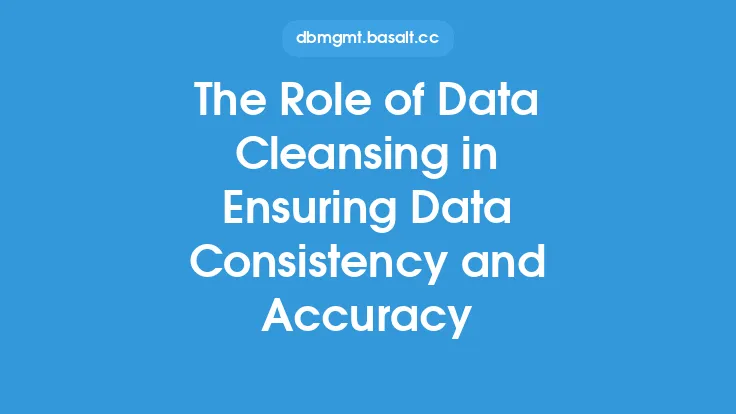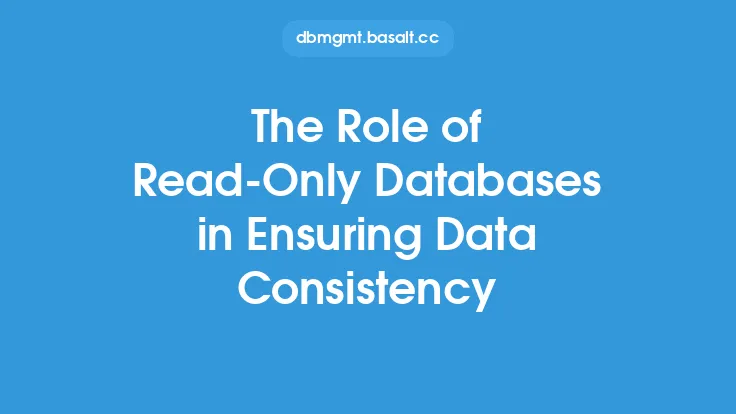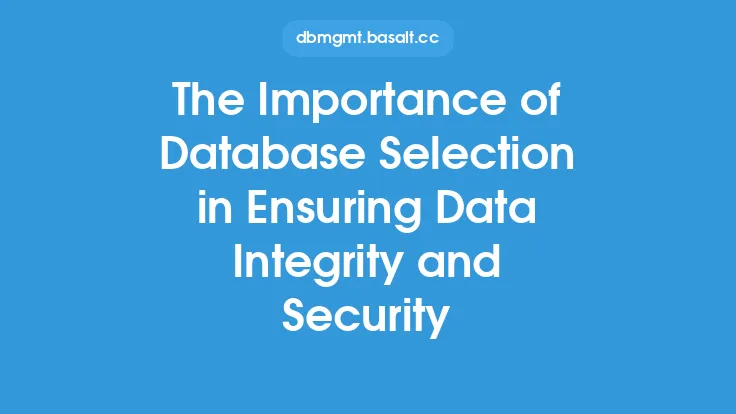Data consistency and accuracy are crucial aspects of any data management system, as they directly impact the reliability and usefulness of the data. One of the key factors that contribute to ensuring data consistency and accuracy is data formatting. Data formatting refers to the process of organizing and structuring data in a consistent and standardized way, making it easier to read, understand, and analyze. In this article, we will delve into the role of data formatting in ensuring data consistency and accuracy, and explore the various techniques and best practices involved in this process.
Introduction to Data Formatting
Data formatting is an essential step in the data management process, as it enables data to be stored, retrieved, and analyzed efficiently. Proper data formatting helps to ensure that data is consistent, accurate, and reliable, which is critical for making informed decisions and driving business outcomes. Data formatting involves a range of activities, including data cleaning, data transformation, and data standardization. Data cleaning involves identifying and correcting errors, inconsistencies, and inaccuracies in the data, while data transformation involves converting data from one format to another. Data standardization, on the other hand, involves establishing a common format for data, making it easier to compare and analyze.
Benefits of Data Formatting
The benefits of data formatting are numerous and significant. Firstly, data formatting helps to ensure data consistency, which is critical for maintaining data accuracy and reliability. Consistent data formatting enables data to be easily compared and analyzed, reducing the risk of errors and inconsistencies. Secondly, data formatting improves data readability, making it easier for users to understand and interpret the data. This, in turn, enables users to make informed decisions and drive business outcomes. Thirdly, data formatting enables data to be easily integrated with other systems and applications, reducing the risk of data silos and improving data sharing and collaboration.
Data Formatting Techniques
There are several data formatting techniques that can be used to ensure data consistency and accuracy. One of the most common techniques is data normalization, which involves organizing data into a standardized format. Data normalization involves identifying and correcting errors, inconsistencies, and inaccuracies in the data, and establishing a common format for data. Another technique is data validation, which involves checking data for errors and inconsistencies before it is stored or processed. Data validation can be performed using a range of techniques, including data type checking, range checking, and format checking.
Data Formatting Standards and Conventions
Data formatting standards and conventions play a critical role in ensuring data consistency and accuracy. These standards and conventions provide a framework for data formatting, ensuring that data is formatted consistently and accurately. Some common data formatting standards and conventions include ISO 8601 for date and time formatting, and ASCII for character encoding. Additionally, many organizations establish their own data formatting standards and conventions, tailored to their specific needs and requirements.
Data Formatting Tools and Technologies
There are several data formatting tools and technologies available, designed to simplify and automate the data formatting process. These tools and technologies include data integration platforms, data quality tools, and data transformation software. Data integration platforms enable data to be integrated from multiple sources, while data quality tools enable data to be checked for errors and inconsistencies. Data transformation software, on the other hand, enables data to be converted from one format to another.
Best Practices for Data Formatting
There are several best practices for data formatting that can help ensure data consistency and accuracy. Firstly, it is essential to establish a clear data formatting strategy, tailored to the specific needs and requirements of the organization. Secondly, data formatting should be performed consistently, using standardized formats and conventions. Thirdly, data should be validated and checked for errors and inconsistencies before it is stored or processed. Finally, data formatting should be automated wherever possible, using data formatting tools and technologies to simplify and streamline the process.
Challenges and Limitations of Data Formatting
Despite the importance of data formatting, there are several challenges and limitations associated with this process. One of the main challenges is the complexity of data formatting, which can be time-consuming and resource-intensive. Additionally, data formatting requires significant expertise and knowledge, particularly when dealing with large and complex datasets. Furthermore, data formatting can be prone to errors and inconsistencies, particularly if data is not validated and checked properly.
Future of Data Formatting
The future of data formatting is likely to be shaped by emerging trends and technologies, including artificial intelligence, machine learning, and cloud computing. These technologies are likely to simplify and automate the data formatting process, enabling data to be formatted more efficiently and effectively. Additionally, the increasing use of big data and analytics is likely to drive the need for more sophisticated data formatting techniques and tools, capable of handling large and complex datasets.
Conclusion
In conclusion, data formatting plays a critical role in ensuring data consistency and accuracy, which is essential for making informed decisions and driving business outcomes. By using data formatting techniques, standards, and conventions, organizations can ensure that their data is consistent, accurate, and reliable. Additionally, by leveraging data formatting tools and technologies, organizations can simplify and automate the data formatting process, reducing the risk of errors and inconsistencies. As data continues to play an increasingly important role in business and society, the importance of data formatting is likely to grow, driving the need for more sophisticated and effective data formatting techniques and tools.





